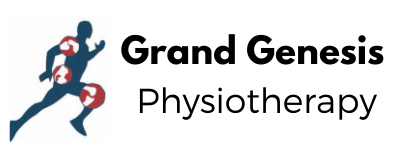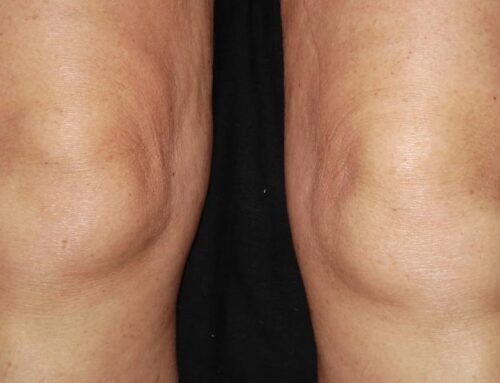“The Chinese medical model discovered that the human body is crisscrossed by these invisible lines of energy,” explains Dr. Steve Moreau, DOM, AP, a licensed acupuncturist and instructor at the Florida College of Integrative Medicine. “TCM theory also holds that each meridian pathway is connected to a specific organ. It’s this interconnection of specific points that allows acupressure to work.”
Is it effective? The research says yes. One reviewTrusted Source found acupressure to be effective at reducing pain in nine of ten studies. With a 2,000-year-old track record, this method of pain management has certainly stood the test of time.
Getting Started
When using acupressure to apply self-massage, it’s important that you be patient and consistent. Improvements may not be immediate, but regular massage can reduce pain as well as the likelihood of recurrences.
When using acupressure:
- Set aside several minutes.
- Sit or lie down in a comfortable position.
- Relax, close your eyes, and breathe deeply.
- Use firm, deep pressure in a small rotating or up-and-down movement.
For Shoulder Pain
Neck and shoulder pain are often the result of stress and can lead to what are commonly referred to as tension headaches. Dr. Moreau says there are several pressure points to use in the relief of shoulder pain, beginning with one of the most commonly used points.
“The first and easiest to find is between the web of the thumb and the first finger,” he says.
- Press with a firm pressure until you feel a mild ache.
- Hold for five seconds.
- Release and repeat three more times.
For Lower Back Pain
There are two main pressure points that can help with lower back pain, says Moreau. The first is on your waist:
- Stand up and lightly grab your waist with both hands so that your thumbs wrap around your back.
- With your thumbs in place, apply a circular motion using firm pressure for a count of five seconds.
- Repeat this three times.
Moreau says you can also find a pressure point to relieve low back pain about midway up your calf muscle:
- Using the same circular motion and pressure, hold for five seconds.
- Release and repeat two more times.
For Sinus Pain
The first point for relieving sinus pressure and pain is right between your eyebrows, says Moreau. He suggests using your index finger or thumb to apply pressure here using a circular motion for 5 seconds.
The second point is at your temples; use the same circular motion as before.
A third option is to trace your fingers from your temples to either side of your nostrils. Using a circular motion, apply pressure here for five seconds.
Moreau recommends following this pressure technique for each of the pressure points, keeping the pressure firm but not painful.
Final Tips on Acupressure
These practices can be done several times each day, but Moreau says you should give your body a break if any points are sore to the touch. He recommends starting with light pressure and gradually moving to a more firm touch.
5 Pressure Points for Sleep
Insomnia is a fairly common sleep disorder that makes it difficult to fall asleep and stay asleep. Having insomnia prevents many people from getting the seven to nine hours of sleep per night that experts recommend.
Some people experience short periods of insomnia for a few days or weeks, while others have insomnia for months at a time.
Regardless of how often you have insomnia, acupressure may provide some relief. Acupressure involves using physical touch to stimulate pressure points that correspond to different aspects of physical and mental health.
While you can have acupressure done by a professional, you can also try stimulating pressure points on your own. Read on to learn five pressure points you can try and find out more about the science behind using acupressure for sleep.
1. Spirit gate
The spirit gate point is located at the crease on your outer wrist, below your pinkie finger.

To treat insomnia:
- Feel for the small, hollow space in this area and apply gentle pressure in a circular or up-and-down movement.
- Continue for two to three minutes.
- Hold the left side of the point with gentle pressure for a few seconds, and then hold the right side.
- Repeat on the same area of your other wrist.
Stimulating this pressure point is associated with quieting your mind, which can help you fall asleep.
2. Three yin intersection
The three yin intersection point is located on your inner leg, just above your ankle.

To treat insomnia:
- Locate the highest point on your ankle.
- Count four finger widths up your leg, above your ankle.
- Apply deep pressure slightly behind your biggest lower-leg bone (tibia), massaging with circular or up-and-down motions for four to five seconds.
In addition to helping with insomnia, simulating this pressure point can also help with pelvic disorders and menstrual cramps.
Don’t use this pressure point if you’re pregnant, as it’s also associated with inducing labor.
3. Bubbling spring
The bubbling spring point is located on the sole of your foot. It’s the small depression that appears just above the middle of your foot when your curl your toes inward.

To treat insomnia:
- Lie on your back with your knees bent so you can reach your feet with your hands.
- Take one foot in your hand and curl your toes.
- Feel for the depression on the sole of your foot.
- Apply firm pressure and massage this point for a few minutes using circular or up-and-down motion.
Stimulating this pressure point is believed to ground your energy and induce sleep.
The inner frontier gate point is found on your inner forearm between two tendons.

To ease insomnia:
- Turn your hands over so that your palms are facing up.
- Take one hand and count three finger widths down from your wrist crease.
- Apply a steady downward pressure between the two tendons in this location.
- Use a circular or up-and-down motion to massage the area for four to five seconds.
In addition to helping you sleep, the inner frontier gate point is associated with soothing nausea, stomach pain, and headaches.
The wind pool point is located on the back of your neck. You can find it by feeling for the mastoid bone behind your ears and following the groove around to where your neck muscles attach to the skull.

To treat insomnia:
- Clasp your hands together and gently open your palms with your fingers interlocked to create a cup shape with your hands.
- Use your thumbs to apply a deep and firm pressure toward your skull, using circular or up-and-down movements to massage this area for four to five seconds.
- Breathe deeply as you massage the area.
Stimulating this pressure point may help to reduce respiratory symptoms, such as coughing, which often interrupt sleep. It’s also associated with reducing stress and calming the mind.
What does the research say?
Acupressure has been around for thousands of years, but experts only recently started to evaluate its effectiveness as a medical treatment. While most of the existing studies about acupressure and sleep are small, their results are promising.
For example, a 2010 study involved 25 participants in long-term care facilities who had trouble sleeping. Their sleep quality improved after five weeks of acupressure treatment. The benefits lasted for up to two weeks after they stopped receiving treatment.
A 2011 study involving 45 postmenopausal women with insomnia had similar results after four weeks of treatment.
There are many studies with similar findings, but they’re all relatively small and limited. As a result, experts don’t have enough high-quality data to draw any concrete conclusions.
However, there’s also no evidence that acupressure decreases sleep quality, so it’s certainly worth trying if you’re interested.
When to see a doctor
Sleep is crucial for your physical and mental health.
Regularly not getting enough sleep is linked to a range of health problems, including:
- weakened immune function
- weight gain
- decreased cognitive function
If you have insomnia that lasts for more than a few weeks, make an appointment with your doctor. You may have an underlying condition that needs treatment.
The bottom line
Most people deal with insomnia at some point in their lives. If you’re looking for a natural remedy to improve your sleep, try doing acupressure 15 minutes before going to bed.
Just make sure to rule out any underlying causes of long-term insomnia.
The Best Pressure Points to Treat Headaches

Pressure points are parts of the body believed to be extra sensitive, able to stimulate relief in the body. Practitioners of reflexology, a discipline of Chinese medicine, believe that touching pressure points in a certain way can:
- improve your health
- ease pain
- restore balance in the body
Reflexology is the study of how one part of the human body is connected to another. This means you might have to massage a different location — like your hand — to treat a different area, like your head. You’ll reach for the right pressure points to ease your pain.
If you want to learn more about treating your headache this way, it’s important to understand how to do so correctly. We explain what science says and give you some pressure points to try next time your head hurts.
The science behind pressure points and headaches
There’s not too much science that supports the use of reflexology to treat headaches, and the studies we have are small and need to be expanded. However, there are a few studies that have looked into how massage therapy on the head and shoulders can relieve headaches. This sometimes involves stimulating pressure points on the head.
In one small study from 2002Trusted Source, scientists investigated how massage might help four adults that were experiencing chronic tension headaches, two to three times per week for six months.
In the study, the massages reduced the number of headaches in each subject within the first week of treatment. By the end of the treatment period, the average number of headaches each subject received fell from almost seven headaches per week to just two per week. The average length of a subject’s headache also decreased by half during the treatment period from an average of eight hours to an average of four.
In a much older but slightly larger study, scientists looked at how 10 intense one-hour massage treatments spread over two weeks might affect 21 women experiencing chronic headaches. As in the smaller study, subjects in this study received massages from certified massage practitioners. The effects of the massages were then studied on a more long-term time frame.
Researchers in this study found that those 10 intense massage sessions led to a reduced occurrence, duration, and intensity of headaches.
How to use pressure points to relieve headaches
There are some well-known pressure points in the body believed to relieve headaches. Here’s where they are and how you can use them:
Union valley

The union valley points are located on the web between your thumb and index finger. To treat headaches:
- Start by pinching this area with the thumb and index finger of your opposite hand firmly — but not painfully — for 10 seconds.
- Next, make small circles with your thumb on this area in one direction and then the other, for 10 seconds each.
- Repeat this process on the Union Valley point on your opposite hand.
This type of pressure point treatment is believed to relieve tension in the head and neck. Tension is often associated with headaches.
Drilling bamboo

Drilling bamboo points are located at the indentations on either side of the spot where the bridge of your nose meets the ridge of your eyebrows. To use these pressure points to treat headaches:
- Use both of your index fingers to apply firm pressure to both points at once.
- Hold for 10 seconds.
- Release and repeat.
Touching these pressure points can relieve headaches that are caused by eyestrain and sinus pain or pressure.
Gates of consciousness

The gates of consciousness pressure points are located at the base of the skull in the parallel hollow areas between the two vertical neck muscles. To use these pressure points:
- Place your index and middle fingers of either hand onto these pressure points.
- Press firmly upward on both sides at once for 10 seconds, then release and repeat.
Applying firm touch to these pressure points can help relieve headaches caused by tension in the neck.
Third eye

HEALTHLINE PARTNER SOLUTIONS

Get Answers from a Doctor in Minutes, Anytime
Have medical questions? Connect with a board-certified, experienced doctor online or by phone. Pediatricians and other specialists available 24/7.
The third eye point can be found between your two eyebrows where the bridge of your nose meets your forehead.
- Use the index finger of one hand to apply firm pressure to this area for 1 minute.
Firm pressure applied to the third eye pressure point is thought to relieve eyestrain and sinus pressure that often cause headaches.
Shoulder well

The shoulder well is located at the edge of your shoulder, halfway between your shoulder point and the base of your neck. To use this pressure point:
- Use the thumb of one hand to apply firm, circular pressure to this point for 1 minute.
- Then switch and repeat on the opposite side.
Applying firm touch to the shoulder well pressure point can help relieve stiffness in your neck and shoulders, relieving neck pain and preventing headaches caused by this kind of sensation.
More research is needed
While using pressure points to treat headaches isn’t well studied, there’s some limited research suggesting that massage of the head and shoulders can help relieve headaches.
Because reflexology is a noninvasive, nonpharmaceutical way to treat headaches, it’s very safe. Just remember it’s a complementary treatment. You should seek out professional medical help if you have recurring or very intense headaches.



